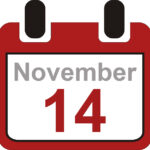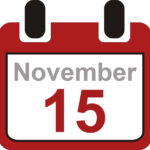Content strategy is a complex concept that has different meanings in different contexts, for example content strategy for marketing vs. content strategy for technical documentation.
What is content strategy and why is it important? How is different from other disciplines such as Information Architecture and where are the overlaps, if any? This presentation aims to answer these questions and provide tips for implementing content strategy in the specific context of hardware and software documentation in product development organizations.
Geetha Haridas & Satu Sevon-Nielsen, Qualcomm

Geetha has a Masters degree in Technical Communication with over 20 years of experience in working for software and hardware product development organizations globally, with a keen interest in problem-solving issues surrounding content development processes. She currently works as a Senior Staff Technical Writer at Qualcomm, Cambridge.
Outside of work, she loves watching movies, cooking, baking, and spending time with my family (and cats). She also works as a volunteer for STEM projects to encourage children, especially girls to develop their interest in STEM careers.

Satu has a Masters degree in Translation with over 20 years of experience in authoring and translation. Satu is also an entrepreneur and has run her own translation agency in the past. She currently works as a Staff Technical Writer at Qualcomm, Finland.
In her spare time, Satu loves watching movies, reading and writing. She also cares very much about animal rights and actively helps with rehoming rescue cats.



 Wouter started his first tech company during his BA studies and sold his former company to SDL Tridion (now RWS). After he left SDL he co-founded TXTOmedia – The Video Automation Company in 2018. TXTOmedia offers technology to automate the creation and localization of training, instruction, and how-to videos. Structured content is turned into videos automatically. The business benefits include speeding up time-to-market, and reducing costs & carbon while improving the customer and employee experience. Wouter is TXTOmedia’s CEO.
Wouter started his first tech company during his BA studies and sold his former company to SDL Tridion (now RWS). After he left SDL he co-founded TXTOmedia – The Video Automation Company in 2018. TXTOmedia offers technology to automate the creation and localization of training, instruction, and how-to videos. Structured content is turned into videos automatically. The business benefits include speeding up time-to-market, and reducing costs & carbon while improving the customer and employee experience. Wouter is TXTOmedia’s CEO.
 Frank Wegmann has 20+ years of experience in the markup world. At Software AG, he has been advancing custom automated build systems for technical documentation since 2001, in recent years with more focus on DITA. He is a regular speaker at international conferences and engaged in OASIS DITA committees, now also as co-chair of the Lightweight DITA subcommittee.
Frank Wegmann has 20+ years of experience in the markup world. At Software AG, he has been advancing custom automated build systems for technical documentation since 2001, in recent years with more focus on DITA. He is a regular speaker at international conferences and engaged in OASIS DITA committees, now also as co-chair of the Lightweight DITA subcommittee. George Bina is one of the founders of Syncro Soft, the company that develops oXygen XML suite of XML editing, authoring, development, publishing and collaboration tools. He has more than 20 years of experience in working with XML and related technologies, bringing many innovative ideas to reality and contributing to XML-related open-source projects.
George Bina is one of the founders of Syncro Soft, the company that develops oXygen XML suite of XML editing, authoring, development, publishing and collaboration tools. He has more than 20 years of experience in working with XML and related technologies, bringing many innovative ideas to reality and contributing to XML-related open-source projects. Pim Bekker is a Senior Solution Architect at Etteplan since 2001, working on (DITA) XML structured content projects including Content Delivery Platforms, AR/VR, and spare part systems.
Pim Bekker is a Senior Solution Architect at Etteplan since 2001, working on (DITA) XML structured content projects including Content Delivery Platforms, AR/VR, and spare part systems. Brianna Stevens joined Comtech as a Consultant in 2015 and immediately became an expert in creating and implementing DITA constraints. Brianna’s design education gives her unique insight into visualizing the content challenges facing our customers. Her outgoing personality puts people at ease, making her an ideal consultant to involve in user and benchmark studies and competitive analyses. In addition to consulting, Brianna does graphic design for the CIDM and Comtech websites, advertisements, and publications.
Brianna Stevens joined Comtech as a Consultant in 2015 and immediately became an expert in creating and implementing DITA constraints. Brianna’s design education gives her unique insight into visualizing the content challenges facing our customers. Her outgoing personality puts people at ease, making her an ideal consultant to involve in user and benchmark studies and competitive analyses. In addition to consulting, Brianna does graphic design for the CIDM and Comtech websites, advertisements, and publications. Robert Anderson has been working with DITA and DITA-OT from the beginning. He now supports cloud-based publishing tools for Oracle Cloud Infrastructure and maintains the site that hosts OCI Documentation. He is currently co-editing the DITA 2.0 specification, and excited to see what comes next.
Robert Anderson has been working with DITA and DITA-OT from the beginning. He now supports cloud-based publishing tools for Oracle Cloud Infrastructure and maintains the site that hosts OCI Documentation. He is currently co-editing the DITA 2.0 specification, and excited to see what comes next. Steve worked as a technical writer for fifteen years, becoming a specialist in solving content problems: both technical and process-based. Moving into content strategy, he joined Arm as Content Architect in 2017, establishing new standards in content models and developing lightweight authoring and collaboration approaches. He is now Director of Infrastructure Engineering within the Partner Enablement group, designing, delivering, and supporting the latest in content authoring and publication tools.
Steve worked as a technical writer for fifteen years, becoming a specialist in solving content problems: both technical and process-based. Moving into content strategy, he joined Arm as Content Architect in 2017, establishing new standards in content models and developing lightweight authoring and collaboration approaches. He is now Director of Infrastructure Engineering within the Partner Enablement group, designing, delivering, and supporting the latest in content authoring and publication tools.











 Bio
Bio